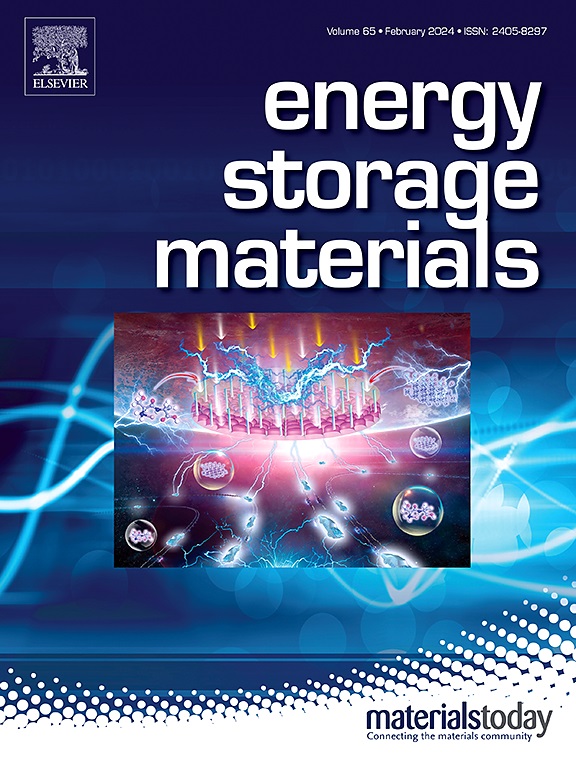Rational design of catalysts for lithium–sulfur batteries based on descriptors: progress and prospects
IF 20.2
1区 材料科学
Q1 CHEMISTRY, PHYSICAL
引用次数: 0
Abstract
The shuttling effect and sluggish conversion kinetics of lithium polysulfides severely hinder the practical application of lithium–sulfur (Li–S) batteries. Introducing catalysts to accelerate sulfur conversion kinetics has emerged as an efficient strategy to address these issues in Li–S batteries. However, traditional trial-and-error approaches to designing sulfur catalysts remain inefficient and unsystematic. Currently, rational sulfur catalyst design based on reactivity descriptors has been widely studied. The descriptors decipher the relationships between structure and catalytic performance, providing relatively standardized criteria for predicting and screening high-efficient sulfur catalysts. This review systematically summarizes the progress of descriptors-guided approaches for designing sulfur catalysts in Li–S chemistry, beginning with the fundamental mechanisms of sulfur redox reactions and key intermediate species involved in catalytic processes. Subsequently, reactivity descriptors including energetic, geometric, electronic and binary descriptors are introduced, and their merits and limitations are discussed. The integration of machine learning with descriptor-based methodologies is highlighted as a transformative approach for advanced catalyst screening. Furthermore, we present recent advances in descriptor-driven sulfur catalyst design. Finally, we identify current challenges and provide forward-looking perspectives on future developments in reactivity descriptor research for Li‒S batteries.

基于描述符的锂硫电池催化剂合理设计研究进展与展望
多硫化物锂的穿梭效应和缓慢的转化动力学严重阻碍了锂硫电池的实际应用。引入催化剂来加速硫转化动力学已经成为解决锂硫电池这些问题的有效策略。然而,传统的设计硫催化剂的试错方法仍然是低效和不系统的。目前,基于反应性描述符的硫催化剂合理设计得到了广泛的研究。这些描述符解释了结构与催化性能之间的关系,为预测和筛选高效硫催化剂提供了相对标准化的标准。本文从硫氧化还原反应的基本机理和催化过程中涉及的关键中间体入手,系统地综述了描述子引导的硫催化剂设计方法在锂硫化学中的进展。随后介绍了反应性描述符,包括能量描述符、几何描述符、电子描述符和二元描述符,并讨论了它们的优点和局限性。机器学习与基于描述符的方法的集成被强调为先进催化剂筛选的变革性方法。此外,我们介绍了描述符驱动的硫催化剂设计的最新进展。最后,我们确定了当前的挑战,并对锂硫电池反应描述符研究的未来发展提供了前瞻性的观点。
本文章由计算机程序翻译,如有差异,请以英文原文为准。
求助全文
约1分钟内获得全文
求助全文
来源期刊

Energy Storage Materials
Materials Science-General Materials Science
CiteScore
33.00
自引率
5.90%
发文量
652
审稿时长
27 days
期刊介绍:
Energy Storage Materials is a global interdisciplinary journal dedicated to sharing scientific and technological advancements in materials and devices for advanced energy storage and related energy conversion, such as in metal-O2 batteries. The journal features comprehensive research articles, including full papers and short communications, as well as authoritative feature articles and reviews by leading experts in the field.
Energy Storage Materials covers a wide range of topics, including the synthesis, fabrication, structure, properties, performance, and technological applications of energy storage materials. Additionally, the journal explores strategies, policies, and developments in the field of energy storage materials and devices for sustainable energy.
Published papers are selected based on their scientific and technological significance, their ability to provide valuable new knowledge, and their relevance to the international research community.
 求助内容:
求助内容: 应助结果提醒方式:
应助结果提醒方式:


